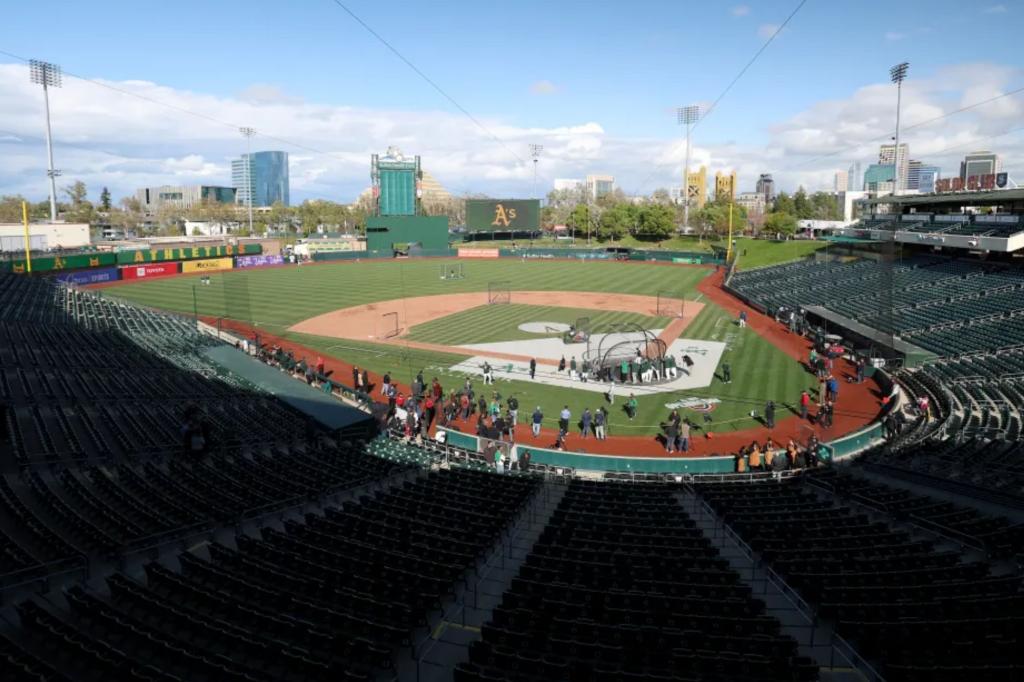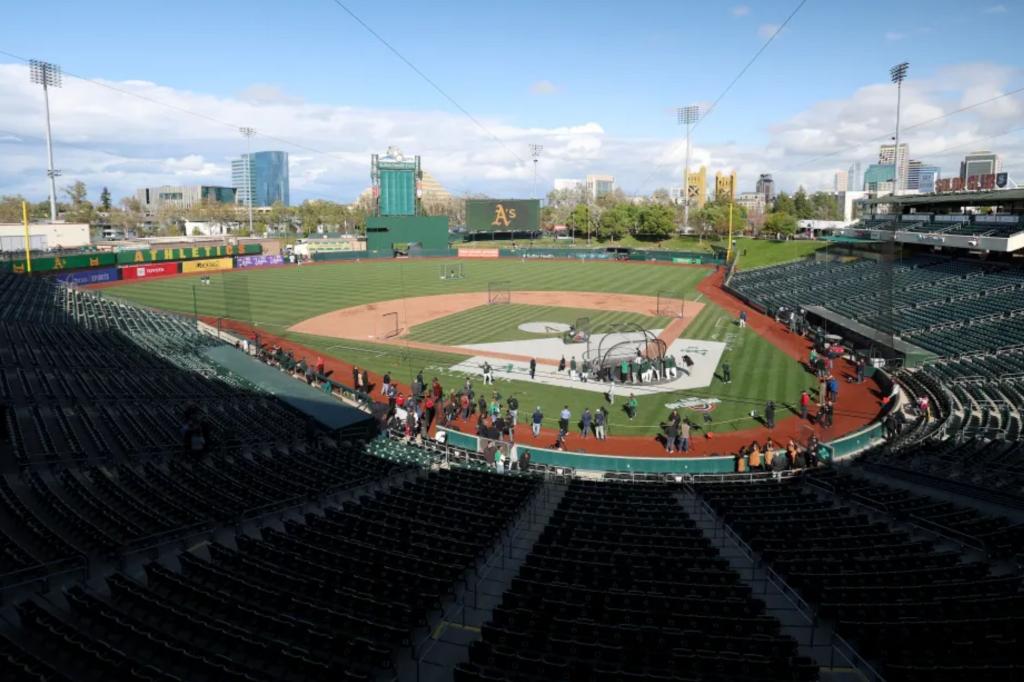
WEST SACRAMENTO, Calif. — It’s not perfect, but it’s home.
As the Athletics — baseball’s foremost vagabond franchise — await their next destination, they are committed to spending three seasons playing home games at Sutter Health Park, a 14,000-seat facility they share with the Sacramento River Cats of the Pacific Coast League.
Such is the plight of a franchise that began in Philadelphia before moving to Kansas City, Mo., and then Oakland, with a new $1.75 billion stadium planned to open in Las Vegas in 2028.
For the A’s players, the only option is acceptance of the new surroundings.
“The situation that we have right now is not the best,” Luis Severino said before the Mets’ 3-1 loss to the A’s. “We just have to adjust to what we have and try to do the best we can.”
The biggest adjustment for players is clubhouse space and the location of those facilities. Unlike other ballparks that host MLB teams, the clubhouses here are detached from the dugouts and located beyond the left-field fence.
Much in the spirit of the Polo Grounds — the Mets’ home for two seasons upon their inception in 1962 — players enter and exit the field before and after the game by walking through the outfield.
The logistics are particularly difficult for bench players accustomed to taking swings in the indoor batting cage during the game. Instead of just walking through a dugout tunnel to a nearby cage, players must now navigate traffic, waiting until between innings to venture beyond the left field fence, where the cages are located.
“Everything is still new, but the staff and everything they have done to the ballpark, a lot of work has gone into it — making sure it’s as close to big league as possible,” A’s outfielder Seth Brown said. “There’s always going to be things that pop up the first year of this place. But every time we have brought something up, [the team] has been accommodating to get it fixed.”
Among the snafus to address: assuring the medical cart is running properly.
On Saturday, members of the grounds crew had to push that cart off the field in the second inning after it evidently ran out of gas when Jose Siri needed a lift to the clubhouse.
Siri departed the game after fouling a ball off his shin.
A new clubhouse was constructed specifically for the A’s, with the River Cats (the Giants’ Triple-A affiliate) also receiving an upgrade in their facilities. The weight room and video room used by the visiting team has received strong reviews from the Mets this weekend.
Space is particularly tight in the visitor’s clubhouse but maybe no worse than Wrigley Field before that facility underwent a major renovation in the last decade.
“I really can’t complain,” Mets reliever Ryne Stanek said. “The building here is a little bit of a maze, but it’s got everything you need. I would say it’s pretty standard for a visiting side.”
Stanek said there wasn’t much discussion among his teammates about playing in a minor league ballpark as the Mets prepared for this trip. The Mets’ previous foray into a minor league facility for a regular-season game occurred during COVID in 2020, when the Blue Jays were playing home games in Buffalo.
“It’s something where you knew [the A’s] put a bunch of money into it and tried to do the right things,” Stanek said. “So I don’t think we really gave it too much thought. You just kind of expected it to be not the same but close enough to the other places we play.”
After decades of back and forth with the city trying to get a new stadium in Oakland, the A’s last year committed to Las Vegas and decided that spending three seasons in Sacramento until their new ballpark is ready was a better alternative than lame-duck status in the Bay Area.
Oakland and Sacramento are 80 miles apart — close enough that the A’s could keep their existing local TV contract.
The A’s have averaged 10,037 fans over their first seven games at Sutter Health Park — up roughly 50 percent from what they drew last year in Oakland.
But some would say it wasn’t a good sign that Friday night’s game here, even with a solid presence of Mets fans, drew only 9,632.
Before the season, manager Mark Kotsay and A’s players began appearing around the city to start publicizing the team.
The push included signing Severino (who pitched last season for the Mets) to a three-year contract worth $67 million. It was the largest free-agent deal in franchise history.
“The support has been phenomenal,” Brown said. “The energy is there, so it’s been fun.”


